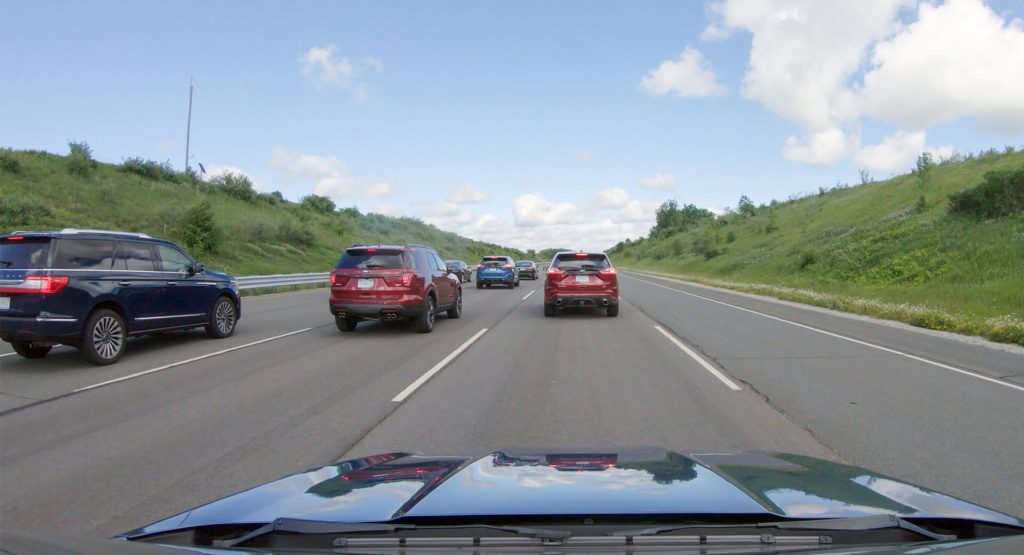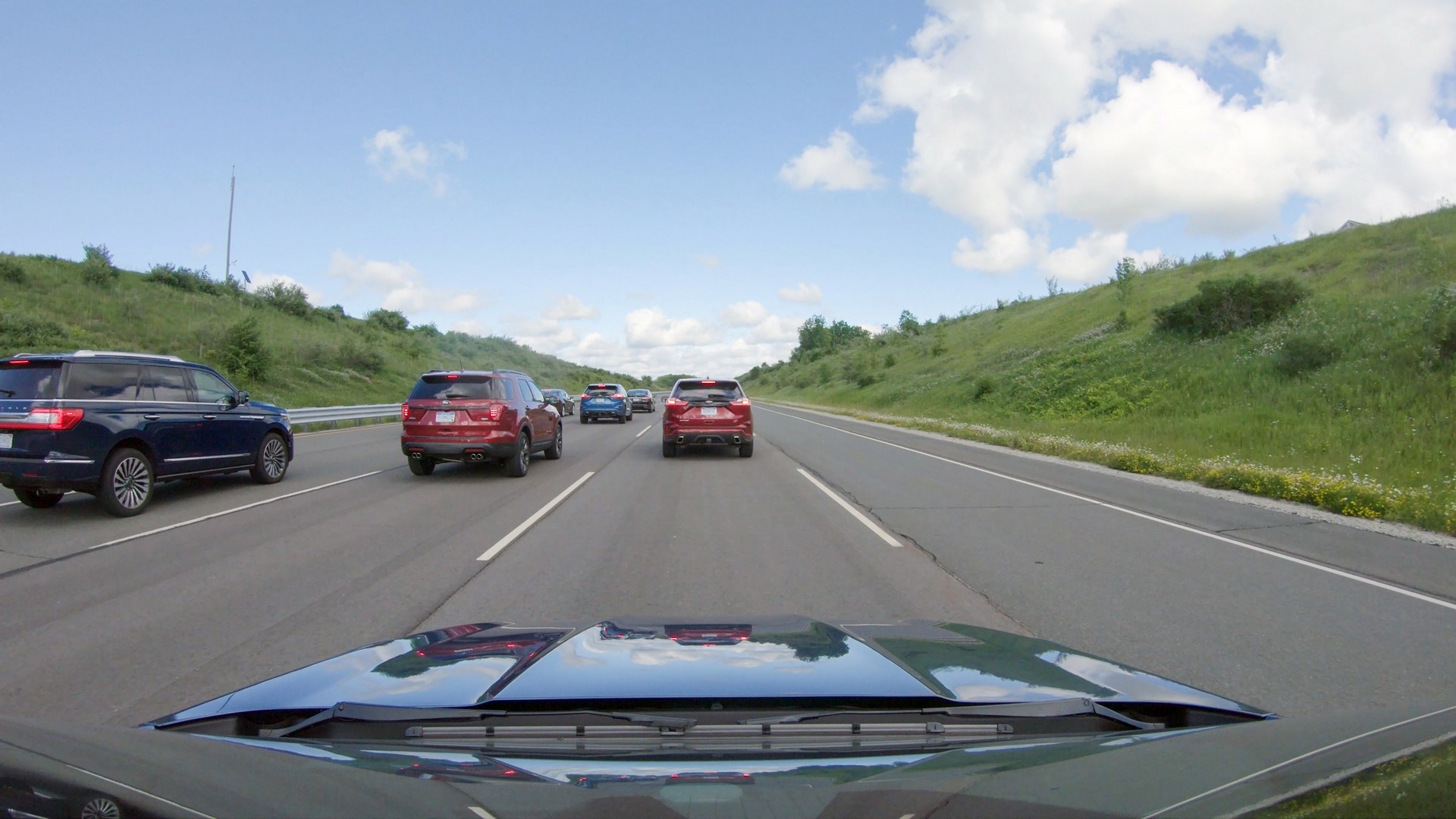Traffics jams are the bane of most people’s commutes but modern technology could significantly ease the burden. To highlight this point, Ford teamed up with Vanderbilt University to conduct a demonstration to show how the widespread use of adaptive cruise control could help minimize “phantom” traffic jams.
The tests were conducted on a closed track using 36 vehicles equipped with adaptive cruise control. During the demonstration, the vehicles traveled as they normally would on the highway but the lead cars unexpectedly slowed down from 60 mph (96 km/h) to 40 mph (64 km/h) to simulate a traffic disturbance.
Without adaptive cruise control, this caused a ripple effect as drivers needed to see the lead car braking, apply their brakes and then speed back up. Ford noted the “drivers each braked harder than the vehicle ahead” and this amplified the initial braking event. In some cases, this caused vehicles near the back to slow to a crawl.
The test was then conducted using adaptive cruise control which automatically adjusts the vehicle’s speed to keep pace with the car in front. Since the system is automatic, it doesn’t suffer from delayed human reactions.
Ford says adaptive cruise control outperformed the human drivers in almost every braking situation. In particular, one test showed the car at the back of the convoy only slowed by 5 mph (8 km/h). Even when only a third of the vehicles used adaptive cruise control, the effects were similar to when all the vehicles used the technology.
Noting the results of the demonstration, civil engineering professor Daniel Work said “For years, traffic researchers and engineers have been looking to smart vehicle technologies to reduce traffic congestion, whether that’s vehicles that talk to each other or vehicles that can predict the road ahead.” He added “This demonstration was a unique opportunity to understand how commercially-available active driver-assist technologies can be used to positively influence traffic flow.”
Work went on to say the average American commuter spends 41 hours every year stuck in traffic jams and this costs them an average of $1,400 annually. The latter figure includes lost productivity, increased wear and tear as well as wasted fuel.
Touting the results of the study, Ford said they started offering adaptive cruise control in 2006 and it is now available on 71 percent of its American lineup.








